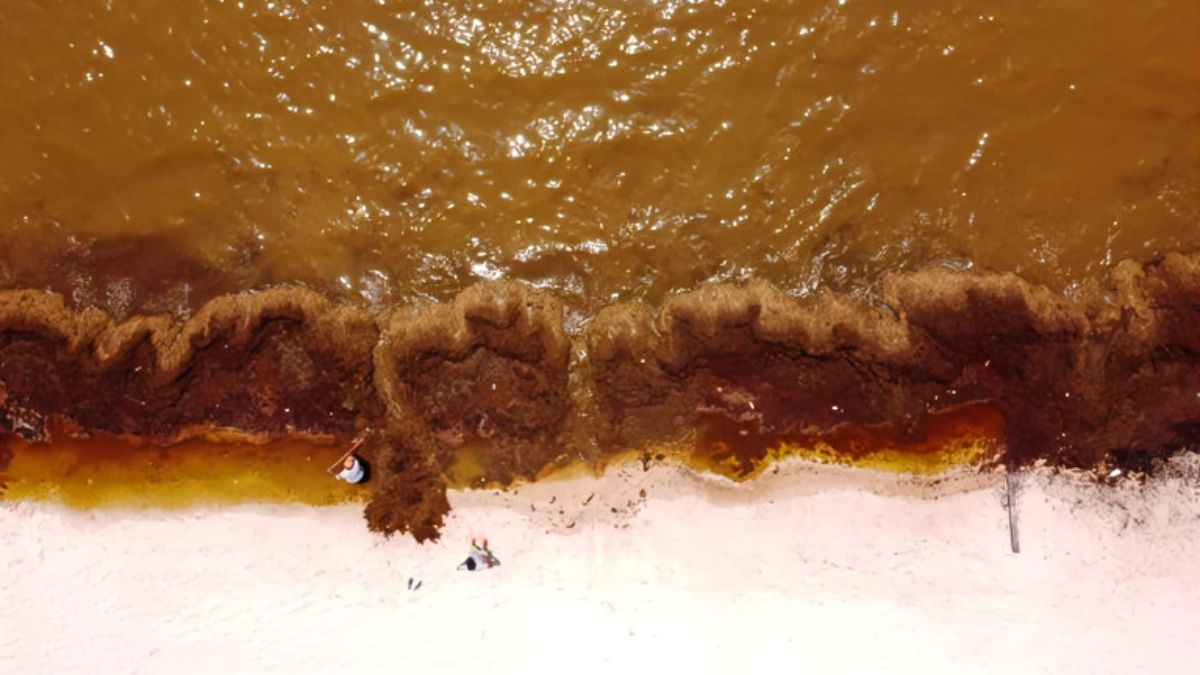There is a huge mass of what is known as Sargassum and it is threatening the beaches in the United States of America as well as in Mexico. Sargassum is a type of algae that blooms in water. Each year, a large amount of this algae washes up on Mexican and American beaches but it has never been a problem. However, this year’s algae mass is so big that it was spotted from space!
5,000-Mile Algae Mass Spotted From Space
The size of this particular mass that has bloomed this year is posing a huge problem on a number of fronts. It can be spotted from space in the Gulf of Mexico and the Caribbean. The ocean waves are now pushing this huge mass towards the beaches in Florida in the US and in Mexico.
The algae mass is spread across 5,000 miles in the ocean and is problematic for a number of reasons. It can damage infrastructure and wildlife as well as the tourism industry. Firstly, it poses a huge threat to aquatic animals that reside near the shores of beaches since they can get trapped and killed in the algae.
Secondly, after getting washed up on the shore, they rot away and, as a result, an extremely foul odour emanates from the mass. This foul odour can prevent tourists from visiting beaches as the smell can be overwhelming. The rotting mass also means that more human resources will be required to clean up the rotting mess.
Also Read: This Kerala Startup Is Making Cookies From Algae And Seaweed And We Are Awestruck!
Problem Getting Worse Year By Year
This year’s seaweed bloom of ‘Great Atlantic Sargassum Belt’ is one of the largest on record. The 5,000-mile mass of algae threatens wildlife, infrasture, and tourism industries. The smell of rotting beached sargassum causes problem for tourism in both Mexico and Florida.😮 pic.twitter.com/f3ZPdl7R8h
— Sumner (@renmusb1) March 12, 2023
Researchers are worried that this problem is getting worse with each passing year. Every year, the seaweed bloom washes up on the shores of the beaches, however, it has never been in such a huge quantity.
This year, the bloom is particularly bad and many researchers think that this problem will only get worse with time. Usually, the algae washed up on the shores around the month of May. However, due to the sheer volume of this year’s seaweed, the algae has reached almost two months prior to their usual time.
Also Read: Women From Tamil Nadu Collect Seaweed In Sarees
What do you think should be done about this unfortunate situation? Let us know in the comments below.
Cover Image Credits: @renmusb1/Twitter
First Published: March 14, 2023 2:27 PM



